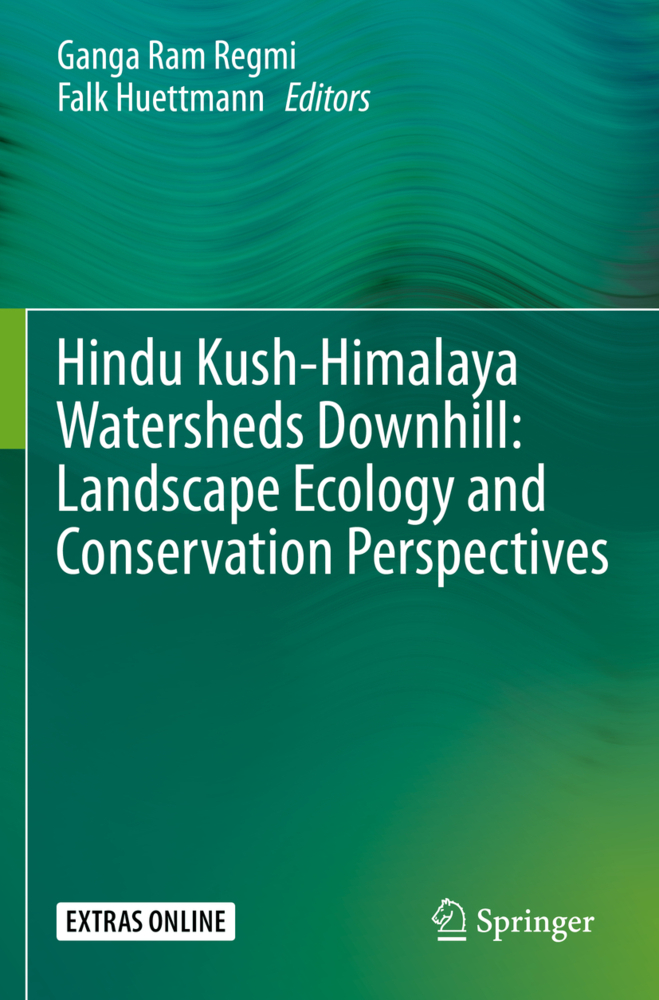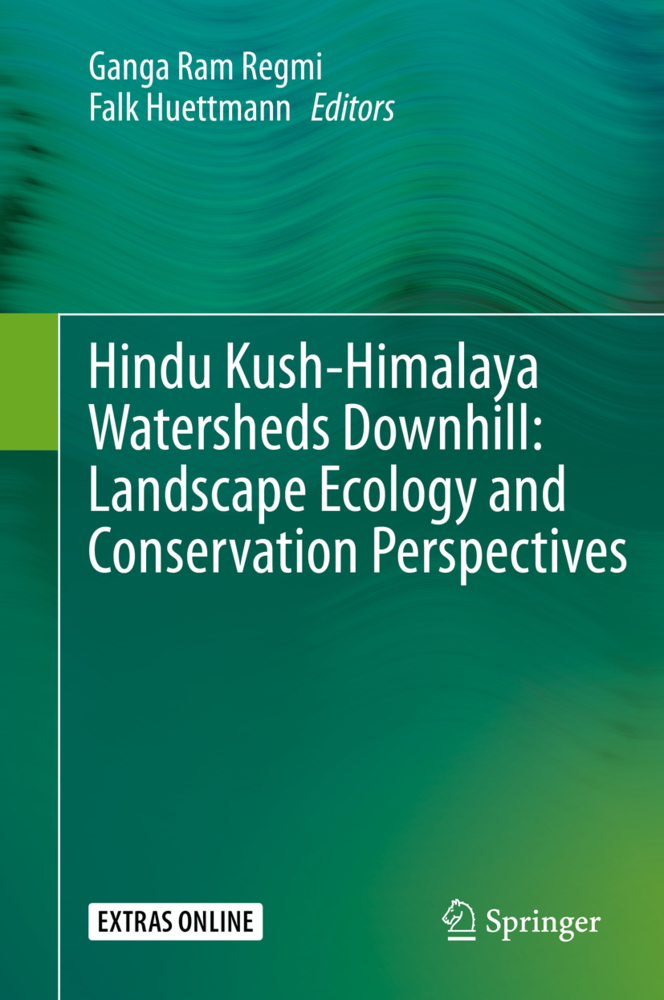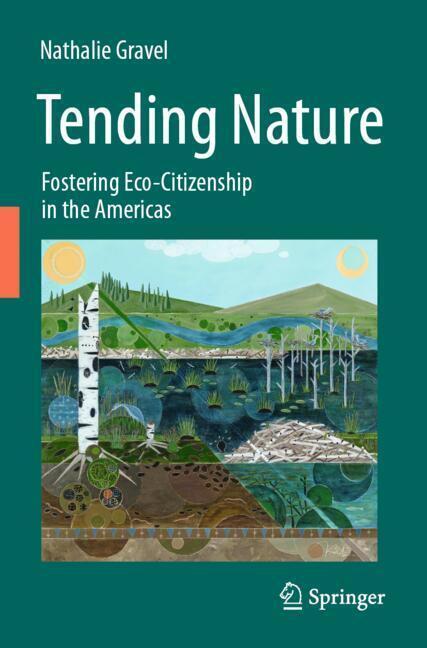Hindu Kush-Himalaya Watersheds Downhill: Landscape Ecology and Conservation Perspectives
Hindu Kush-Himalaya Watersheds Downhill: Landscape Ecology and Conservation Perspectives
This book describes the myriad components of the Hindu Kush-Himalaya (HKH) region. The contributors elaborate on challenges, failures, and successes in efforts to conserve the HKH, its indigenous plants and animals, and the watershed that runs from the very roof of the planet via world-rivers to marine estuaries, supporting a human population of some two billion people. Readers will learn how the landforms, animal species and humans of this globally fascinating region are connected, and understand why runoff from snow and ice in the world's tallest mountains is vital to inhabitants far downstream.
The book comprises forty-five chapters organized in five parts. The first section, Landscapes, introduces the mountainous watersheds of the HKH, its weather systems, forests, and the 18 major rivers whose headwaters are here. The second part explores concepts, cultures, and religions, including ethnobiology and indigenous regimes, two thousand years of religious tradition,and the history of scientific and research expeditions. Part Three discusses policy, wildlife conservation management, habitat and biodiversity data, as well as the interaction of animals and humans. The fourth part examines the consequences of development and globalization, from hydrodams, to roads and railroads, to poaching and illegal wildlife trade. This section includes studies of animal species including river dolphins, woodpeckers and hornbills, langurs, snow leopards and more. The concluding section offers perspectives and templates for conservation, sustainability and stability in the HKH, including citizen-science projects and a future challenged by climate change, growing human population, and global conservation decay.
A large assemblage of field and landscape photos, combined with eye-witness accounts, presents a 50-year local and wider perspective on the HKH. Also included are advanced digital topics: data sharing, open access, metadata, web portal databases, geographic information systems (GIS) software and machine learning, and data mining concepts all relevant to a modern scientific understanding and sustainable management of the Hindu Kush-Himalaya region.
This work is written for scholars, landscape ecologists, naturalists and researchers alike, and it can be especially well-suited for those readers who want to learn in a more holistic fashion about the latest conservation issues.
Preface
Part 1 Landscapes
Mountain Landscapes and Watersheds of the Hindu-Kush Himalaya (HKH) and their Biogeography: A descriptive overview and introduction for 18 nations in the Anthropocene
HKH in the global and climate context: Major weather systems, monsoon, Asian Brown Cloud (ABC) and global connections
From the mountains and glaciers down to the rivers to the estuaries and oceans: A tale of 18 rivers
HKH in the global and marine context: Major estuaries, 2 billion people and global food security
A view from space on Poyang Lake: What we can already see and what it means
Poyang Lake: A local view downstream from the Hindu Kush Himalaya. The Future of Biodiversity in the Changing Watersheds of Kashmir Himalaya, Pakistan: Conservation Challenges and Opportunities
Towards a Landscape Perspective of Diseases in Plants: An Overview and Review of a Critical but Overlooked Ecology Issue in the Hindu Kush-Himalayan Region
Change of Hindu Kush Himalaya region throughphoto monitoring
Paper parks in the Hindu Kush Himalaya region
Forestry Management in Nepal: An example and a review of growth & yield
Part 2 Concepts, Cultures, Religions and the Mind
What it is like to be a land-locked nation: Examples from Nepal and Bhutan
Ethnobiology and indigenous regimes in the conservation of species, watersheds, and landscapes: Experiences and evidences from the Hindu Kush-Himalayan nations for a global application
Spirituality beats it all: A quick overview, self-organization and great value of (indigenous) religions: 2,000 years later
The terror of your mind: Fear, Anxiety, inherent Chaos and Self-doubt in Himalaya expeditions and research
Part 3 Real-world Policy, Conservation Management of Wildlife, Habitat, and Biodiversity Data
The relevance and role of Mid-elevation for conservation in the Hindu Kush Himalaya: A Nepal example
Nature and landscape governance in royal times: Experiences from the Shah and Rana regimes in Nepal re-assembled from literature and interview data
Urban Ecology in shops and housing: An example of culture, religion and how (nesting) Barn Swallows, House and Tree Swallows create for a lively human-wildlife link at the commercial interface
Pallas's Cat in Annapurna, Nepal: What we know thus far and what is to come
Status of otters in Nepal: A link with ancient waterways and people
Wildlife Diplomacy and Gifting in the Hindu Kush-Himalaya region: A chronological history and opinion of Nepalese literates
Birds of Nepal: their status and conservation especially with regards to watershed perspectives
A governance analysis of the snow leopard, its habitat and data: Who owns charismatic animals and who drives and uses the agenda for what?- The Annapurna Conservation Area Project (ACAP): Towards a success story in landscape feature and watershed conservation management
The forgotten species and their data: Museums in Nepal and examples
A rather short story of the GIS data layers in HKH
A pollination, insect and IUCN view: Ecological Services matter the most
Sarus Cranes and Stork species hotspots from geo-referenced rapid assessments in Lumbini: Holy species and religious attitudes drive entire ecological communities and services for the benefit of a nation
Part 4 Very Serious Problems in the HKH nations
A 'global change' eulogy, sermons and obituaries: Everest, the models, the reality, the governmental mis-behavior, associated institutional terror and the global abuse of the Hindu Kush-Himalaya region
The gods are angry: A first-hand account and an experience of the earthquake in hindsight
Hydrodams: Death by over 500 cuts and blockages virtually build without Impact Assessment
Hydrodams again: Lost Dolphins, expensive Gharials, cut Fish migration, and energy for non-sustainable mining and societies abroad fueling non-democratric governance and industry
Persistent evidence for a dramatic decline in Langurs in Nepal, and likely elsewhere, too
SnowLeopards in 2100?- The fate of the great woodpeckers and hornbills in Nepal: No big trees, no life
Poaching and illegal Trade of Wildlife: What do the media say for the Nepali-Chinese and Nepali-Indian border?- Looking at Road and Railroad Development Data in the Hindu Kush-Himalaya: Rock-solid impacts created by Globalization, The World Bank and its affiliates, as well as by the Great Himalaya Trail
Why do some many Nepalis, medical doctors, CEOs and Hedge Fund Managers get sick or die on Everest (Sagarmatha, Chomolungma) ? A review and indicators that capitalism went awful while searching human dignity and itself
Part 5 A fresh look and successful templates for HKH: Business as usual is dead
Small and effective NGOs as a role model for bigger success: The Global Primate Network (now 'Third Pole Conservancy')
When Micro drives the Macro: A fresh look at disease and their massive contributions in the Himalaya
What Mining has in stock down river for Mongolia and beyond: A personal assessment of watersheds and rivers
Good Citizen Science experience downstream of Everest: The Koshi Birding Club
Citizen Science experience: Green Youth Club promoting Cranes in Lumbini region
When governments cannot do it anymore and capitalism, neoliberal policies and globalization get imposed without democracy: Self-organization beyond E. Ostrom
Quo Vadis the Hindu Kush-Himalaya Realistic Sustainable Development horror scenarios while climate change, human increase and global conservation decay rise further?- Index.
Regmi, Ganga Ram
Huettmann, Falk
| ISBN | 978-3-030-36277-5 |
|---|---|
| Artikelnummer | 9783030362775 |
| Medientyp | Buch |
| Copyrightjahr | 2021 |
| Verlag | Springer, Berlin |
| Umfang | XXIII, 894 Seiten |
| Abbildungen | XXIII, 894 p. 322 illus., 246 illus. in color. |
| Sprache | Englisch |











